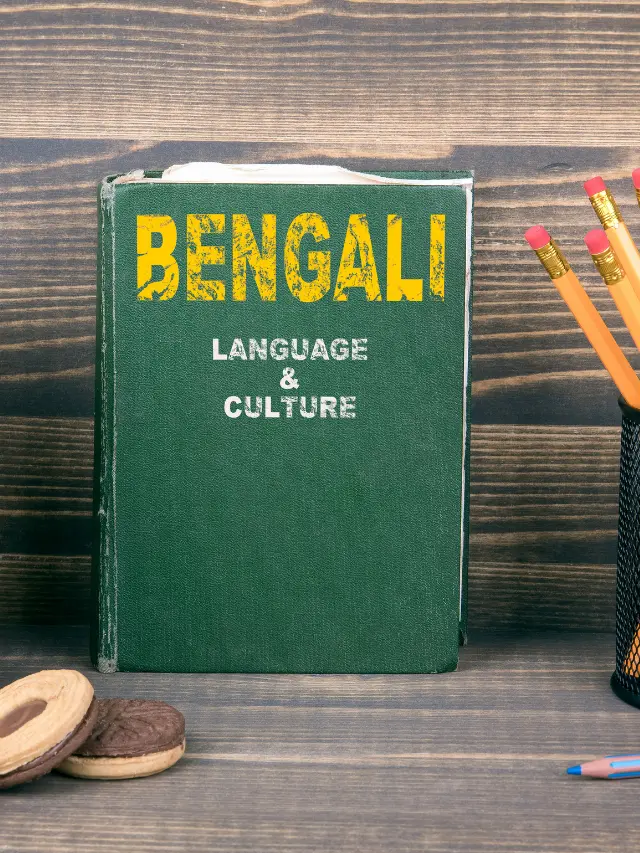Bengali Language is used by the majority of the population and is the official language of West Bengal. Other than Bengali, you can also listen to Nepali, Oriya, and Bhutiya in West Bengal because most of the people have migrated from these places. You can come across Chinese and Burmese speakers in West Bengal but the major one is Bengali only.
According to the 2011 census, there are about 9,72,37,669 Bengali speakers with a decline of 8.03 percent from 8.30 percent Bengali speakers in 2001. Though the language is declining, it has gained popularity in the newspapers in the state with Bengali dailies only.
The Census report further states that Bengali Language being the 2nd most spoken language in India next to Hindi has speakers in 3 states and 1 union territory: West Bengal (86.22%), Assam (28.92%), Tripura (65.73%), and the Andaman and Nicobar Islands with 28.49%). Besides these, there are Bengali speakers in Mizoram (9.83%), Meghalaya (7.84%), Jharkhand (9.73%), and Arunachal Pradesh (7.27%) respectively.
Writings of Bengali Language
Bengali Language is a de-facto national language of India and is the 2nd official language of the Jharkhand state. It is also the sole official language of Bangladesh and the secondary language in Karachi, Pakistan.
The Bengali alphabets are said to have derived from the Brahmi alphabets which are closely related to the Devanagari in the 11th century AD. Later it was modernized during the 19th century.
The two literary styles of Bengali include the Shadhubhôsha (সাধুভাষা – “elegant language”) and Chôlitôbhasha (চলিতভাষা “current language”). The former adopted the traditional style based on the Middle Bengali of the 16th century, created in the 20th century, and later it was based on the speech of the educated people in Calcutta.
There are minor differences, especially with the use of pronouns, and verb conjugations. Some mention that the scripts must have been acquired from Eastern Neo-Brahmic script or Eastern Nagari script.
The linguistic history of Bengali
Bengali along with two other cognate languages, Assamese and Oriya besides Magadhi, Maithili, and Bhojpuri form the linguistic group.
Their immediate source when traced back to the Eastern Prakrit or Magadhi Prakrit developed through Magadh Apabhramsa. The inadequacy of the written documents of the immediate Pre-Bengali period during the 16th century AD proved that there is no Magadhi Apabhramsa except a small inscription.
Based on limited documents, after the 16th century AD, the Bengali language was separated into three distinct periods namely,
- AD 950/1000 – AD 1200/1350 – Old Bengali
- AD 1350 – AD 1800 – Middle Bengali
- AD 1800 (Today) – Modern Bengali
Genetically, Bengali is derived from the Indo-Aryan or Indo-Iranian and Indo-European language families. When compared to ancient times, Bengali Language is older than Hindi but the script of Devanagari is older than that of Bengali.
Bengali Scripts
The word alphabet/script (lipi in Bengali) originated from the Sanskrit meaning ‘to plaster’ or ‘to apply’ because by this method the scribing was made on palm leaves by applying layers of ink. The Bengali scripts were engraved in two different scripts, the Brahmi and Kharosthi belonging of the Sumerian origin.
Initially, the Brahmi script which dates back to the 3rd century BC is written from left to right. The Kharosthi script which was prevalent from the 3rd century BC to the 3rd century AD did not give rise to any other script. From the above findings (i.e) during the 7th century, it is evident that Bengali script is derived only from the eastern variety of the Brahmi script or Kutilalipi.
The similarity of Bengali Language and other languages
Bengali has similarities with most of the Indian languages like Hindi, Assamese, Odia, Gujarati, Punjabi, Urdu, Telugu, etc, and other country languages like English, Portuguese, Persian, Japanese, and Afrikaan, etc.

To get an idea you can refer to the Romanised examples:
English word Urdu (Persian Origin) Bangla (Persian Origin)
Cheese – Paneer – Ponir
Rabbit – Khargosh – Khorgosh
Arrow – Teer – Teer
English word Urdu (Persian Origin) Bangla (Non – Persian Origin)
White – Safed – Shaadaa
Pain – Dard – Baetha
Lion – Sher – Shingho
Bengali Alphabets
Bengali Numerals
Although Bengali has its derivation from Sanskrit, it is said to have passed through several stages of evolution. Certain wide range of Sanskrit words, are derived from the tribal languages including Persian and European languages as a part of modern Bengali.
Read also Marathi Language.





